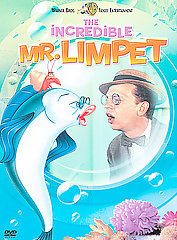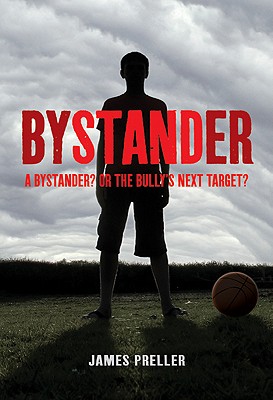Note: This was first posted over at The Nerdy Book Club, a great sight for fans of children’s books. Recommended.
EVERYBODY ELSE IS ALREADY TAKEN
“To be yourself in a world that is constantly trying to make you something else is the greatest accomplishment.” – Ralph Waldo Emerson.
After I wrote the book BYSTANDER (Macmillan, 2009), I began to receive invitations to speak at middle schools. I was wary at first of being perceived as anybody’s “anti-bullying program.”
I wrote a book. Not a pamphlet, not a list of discussion questions, not a nonfiction guide to bullying. I could not offer a handy list of ten ways to make your school a bully-proof zone. I didn’t even believe in it.
I wrote a story –- that was the tool at my disposal.
Stories are essential to our lives. How could we live without them? We watch television, go to movies, tell tales to our friends and neighbors, conjure dreams at night, play complex video games, read books. Humans are storytelling creatures. We seem to need stories. Something inside us craves stories, we hunger for them, ravenous.
Why is that?
Stories function differently than nonfiction. The characters have a way of worming inside our souls. Robert McKee, in his book, STORY, claims that “Stories are equipment for living.”
Equipment for living.
Our lives race past us, a frantic blur, and we move from the next thing, to the next, to the next, with barely a moment’s reflection.
Stories give us pause. They give our lives form and shape. And time. We turn a page. We consider. We piece together the meaning of our days through the stories we hear.
And we ask of these stories the same question, over and over again: What is a good life? How are we to conduct ourselves here on this earth?
Well-told stories, as Harper Lee so beautifully demonstrated in TO KILL A MOCKINGBIRD, allow us to walk in someone’s else’s shoes. Remember that remarkable scene at the end of the book? When Scout walks Boo Radley home, climbs up to his porch, and for a moment turns and looks at the world from his perspective?
Scout concluded: “Atticus was right. One time he said you never really know a man until you stand in his shoes and walk around in them. Just standing on the Radley porch was enough.”
That’s story.
It’s also called empathy, understanding, compassion.
Here’s McKee again: “A culture cannot evolve without honest, powerful storytelling.”
Story isn’t an escape from reality. It is a light that shines upon the dark corners of our world, the secret places, the hidden fears and hopes and dreams.
It is why books matter, and why, I now know, some teachers have embraced BYSTANDER –- among other novels — as a way to explore this complex topic.
I’ve stood on a stage in auditoriums in front of 500, 600, 700 middle school-age children. Or as they refer to them in Ireland, “young people.” I like that. Young people. So much more intrinsically respectful than kids, little lambs eat ivy.
Despite my experience visiting places like Oklahoma and South Carolina, Illinois and Connecticut, Florida and Michigan, I’m still in the process of learning how to talk about bullying. Still growing into my own shoes. Still learning to speak above a whisper.
One of the central ideas embedded in the book – an idea I came to understand only through the passage of time – also happens to be one that’s incredibly difficult for me to directly convey to middle school students. So I don’t try to tell it, per say, so much as hope it leaks out over everything, like sunlight through the edges of a drawn blind. But I think it’s worth saying to you, here.
Research shows that bullying peaks in middle school. Why is that?
Let’s recall Emerson’s quote from up top, and agree that one of the greatest achievements in life is to become, simply, one’s true self. It sounds easy enough, but as we know, it is not. I’m a father, I have three children, including a 7th-grader and a 9th-grader. I watch their awkwardness and insecurities and struggles.
To be content in your own skin.
To not look to others for your cues.
To accept and trust who you are, to follow your own inner compass.
These are not easy things.
At no time in life is it tougher than in middle school, when peers begin to replace parents as prime influencers. How to dress, what to talk about, what to watch on television, how to act, where to sit, whom to befriend, whom to avoid. This is how we forge identity, hammering out our awareness of self (which is a created thing after all, the “self” we decide to become). At middle school, many of these daily details are powerfully influenced by the pack.
Yet a primary aspect to becoming a true individual is the casting off of those concerns. It’s a challenge for anybody to stand up against the crowd. For a middle schooler, it’s close to impossible. On a deep level, in terms of self-identity, they see themselves as the group. The group is them, the individual swallowed by the great whale. And we are all Pinocchio, trapped inside the dark belly, fumbling for a light, yearning to become a real boy.
This dynamic is how young people find their place in the world. We watch others to learn about ourselves. We tell stories. We listen. And then when it comes to bullying, the adults in their lives tell these young people to not worry what anybody else thinks.
“Who cares what anyone thinks!”
Well, they care. They care so much.
In my heart, I believe the lasting answer to bullying is to become a genuine, authentic, free-thinking, responsible individual. The best definition of responsibility I’ve heard is “the ability to respond,” to act according to the courage of your convictions.
People are good, I absolutely believe that. And the closer people hone into to their true selves, the better and more moral they become.
Be yourself. In doing so, we all become far more likely to allow others the freedom to be their selves.
Shakespeare: “This above all: To thine own self be true!”
Or, if you prefer, Oscar Wilde: “Be yourself. Everybody else is already taken.”














